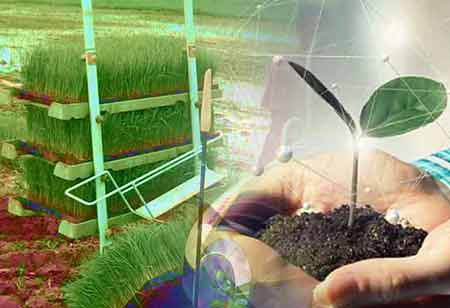Thank you for Subscribing to Agri Business Review Weekly Brief
Greenhouse Innovations
While vertical farming is presently at the center of attention, in the grand scheme of controlled

By
Agri Business Review | Thursday, July 28, 2022
Stay ahead of the industry with exclusive feature stories on the top companies, expert insights and the latest news delivered straight to your inbox. Subscribe today.
Innovation is directed by three main drivers: in-house development within companies, technology providers, and cross-industry pollination.
Fremont, CA: Vertical farming has become an extremely famous topic in agriculture, technology, and investment.
While vertical farming is presently at the center of attention, in the grand scheme of controlled environment agriculture, it is still relatively small compared to the dominant industry: Greenhouse. Every technology that vertical farms now utilize to grow crops indoors, from hydroponic irrigation to intelligent sensors and automation, has been and remains to be used by and for the greenhouse industry.
In general, the past and current situations regarding indoor farming have already signaled two critical messages. First, there is logical reasoning to back the argument that indoor ag will evolve the norm and play a vital role in our current food landscape. It won’t be a simple journey, but the industry is growing and changing at a fascinating speed. Second, technology advancements lead in helping the industry mature and reach enormous profitability.
As our global population grows and resources like land, water, and labor become more restricted, indoor farming will be a dominant contributor to feeding the global population, just as crucial as land-based production.
Lighting/materials
Energy costs—mainly associated with lighting—are significant in the operation of a greenhouse facility. Lighting is a vital component for growing plants in completely closed environments since it is the primary energy input utilized by plants for photosynthesis. Light-emitting diodes (LEDs) were first accepted for indoor growing in the 1970s to supplement natural sunlight more effectively than previously employed incandescent bulbs. With the progress of LED technology, the cost of lighting has dropped considerably over the last ten years—specifically, LED lighting costs have halved, while their efficacy, or light energy, has more than doubled.
We can expect prices to remain to drop as technology develops and this trend continues. Also, precise control of lighting can enable the discovery and dissemination of reproducible “light recipes” tailored to crops specifically grown indoors. These light recipes could be developed and utilized by farmers to control how plants grow, what they taste like, and their nutrient composition.
Data/AI
Artificial Intelligence is likely to grow considerably in the coming years. AI-powered tools are obtaining popularity across several industries, including agriculture. Someday, we can expect AI to be used in farming using automation and predictive analytics.
Robots are gradually replacing humans as we see more fully-automated farming operations. Robots support replace mundane tasks, such as seeding, weeding, and harvesting.
AI and machine learning technologies are cultivated to give farmers more precise control of their growing operations.
Automation will probably become more feasible for farmers as AI technology improves and turns less expensive. Cutting labor costs will allow product prices to decrease, making the need for local food more accessible.
Biological Development
While enhanced environmental control and farming practices will undoubtedly lead to greater crop yields, biological alterations to crops can more specifically customize them to their growing environments and the needs of their consumers. Indoor growing environments and processing facilities lower the need for plant traits which provide stability in the face of environmental fluctuations, pests, pathogens, and post-harvest injury. New plant breeding techniques and genome-editing technologies can promote unique plant traits that focus on rapid plant growth, performance in low-light environments, plant stature, nutrition, and flavor.
Coupling heightened environmental control with biological control allows variable gene expression under different growing conditions. This could lead to crop varieties distinct from their outdoor counterparts for new culinary applications and create particular markets for produce grown indoors.
Industrial synergies
With the increase of abundant tech providers and cross-disciplinary innovators, we can hope collaboration and knowledge sharing to become more common. Along with yielding more effective indoor growing technologies, collaboration may substantiate partnerships between companies that reduce their ecological footprints.
For example, co-locating greenhouses with industrial power plants can distract carbon dioxide and heat—byproducts of combustion—from the atmosphere to crops for photosynthesis enhancement and climate control. Moreover, composted food waste may be diverted from landfills to fertilize crops in soil-based greenhouses. On the other hand, transparent solar panels may enable greenhouses to turn net energy producers to supply nearby buildings without sacrificing crop performance.
New technologies and concepts will better integrate greenhouses with the world around them, helping urban and industrial communities become more productive and sustainable.
Innovation in technology and practice will be the key drivers of new developments in indoor greenhouse farming. While these developments will be assorted and multidimensional, their effects will undoubtedly be focused on improvements to the potential scale, efficiency, and quality of food in indoor agriculture. After the greenhouse’s historical trajectory, it is safe to assume its relevance to global food systems will continue to expand as we progress into the future.





